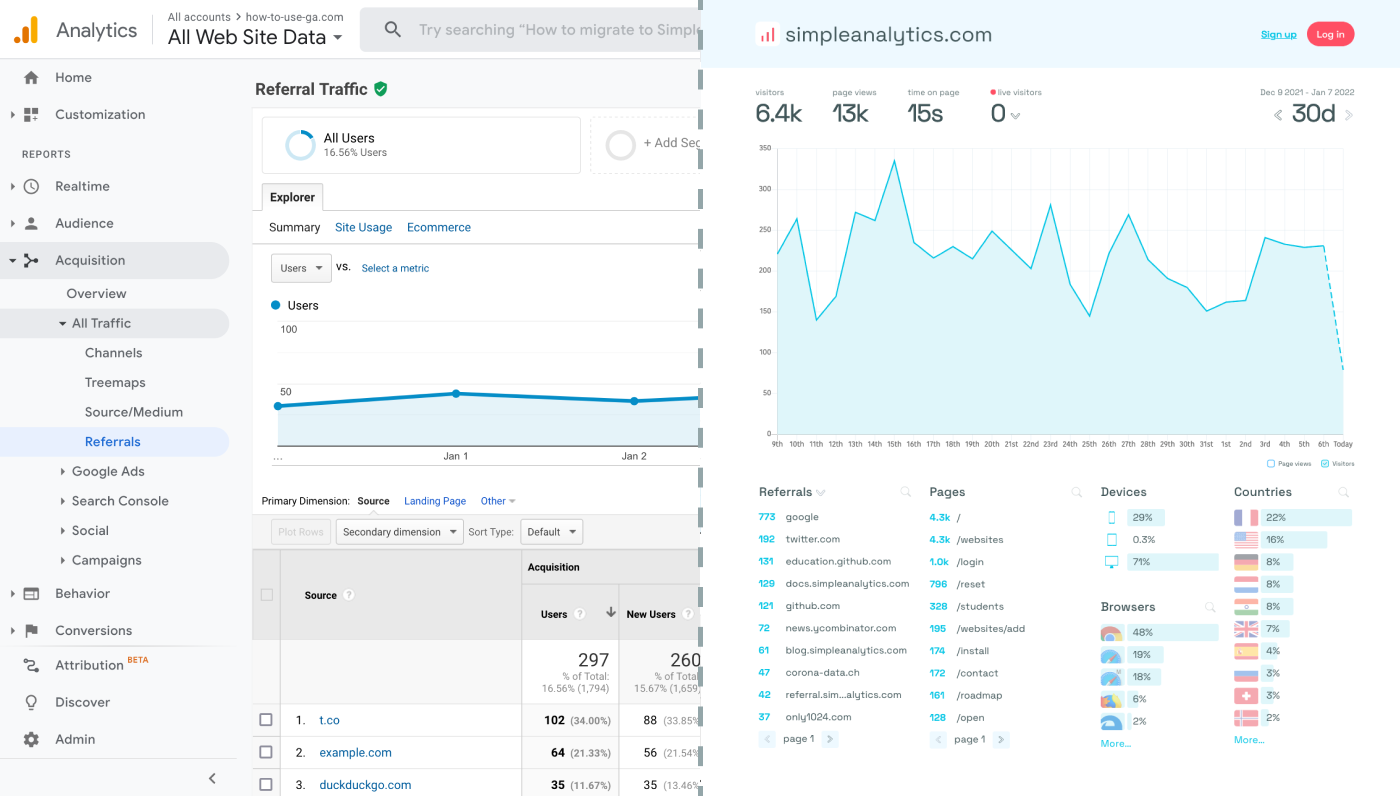Integrating Google Analytics with your Squarespace website is a key step in understanding your audience and their interactions with your site. Here is how to add Google Analytics, step by step.
Let's dive in!
Before we dig in I want to show you something. I promise it's worth it...
Google Analytics is great, but also complex and a bit clunky. If you just want a straightforward dashboard with the insights you need, GA is not a great place to start. Additionally, Google doesn't care about privacy and GA requires an annoying cookie banner.
That's why I built Simple Analytics, a privacy-friendly and simple analytics tool - no personal data, no cookies, just the insights you need in a straightforward dashboard.
Here is how it looks vs GA. Feel free to check our live analytics to get an idea for your project. (It is free btw)
All right, enough about us. Now let's get into answering your question!

Integrating Google Analytics
Setting up a property
First, set up a Google Analytics account and create a GA property. After setting it up, you will receive a "Measurement ID" which looks something like 'G-XXXXXXXXXX'.
Adding Google Analytics
- Log in to your Squarespace account and select the site you want to integrate with GA.
- Go to 'Settings' > 'Advanced' > 'External API Keys'. Squarespace has a dedicated section for integrating Google Analytics.
- In the Google Analytics Account Number field, enter your GA4 Measurement ID.
- Click 'Save' to apply your changes. Squarespace will automatically add the GA tracking code to your site.
- After applying the changes, it’s a good idea to verify the implementation. You can do this by checking the Realtime report in your GA account or using tools like the Google Analytics Debugger for Chrome.
(Optional) Create New Properties
To track multiple websites, create extra properties and use the corresponding Measurement ID. This prevents GA from conflating the data.
Final Thoughts
Adding Google Analytics to your site can give you great insights. However, ask yourself: is Google Analytics the right tool for you?
GA is an overpowered solution for straightforward analytics. If you're looking for a simple and intuitive dashboard with the insights you need, there are better alternatives. Yes, I’m talking about my own product (Simple Analytics), but there are others out there as well.
I hated using Google Analytics for my projects. It's clunky, there are hundreds of dashboards and it doesn't look appealing. Also Google doesn't care about privacy or ethics. That's why I decided to build my own and more intuitive web analytics tool.
If this resonates with you, feel free to give Simple Analytics a spin. You just need to add the script to your website and off you go. This takes about one minute- and there is a free version as well!
Enjoy!
